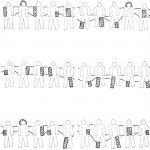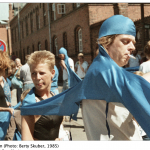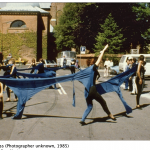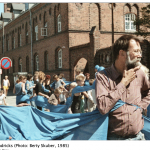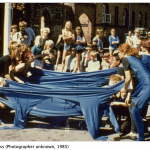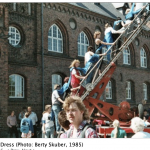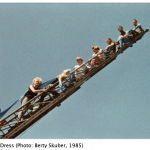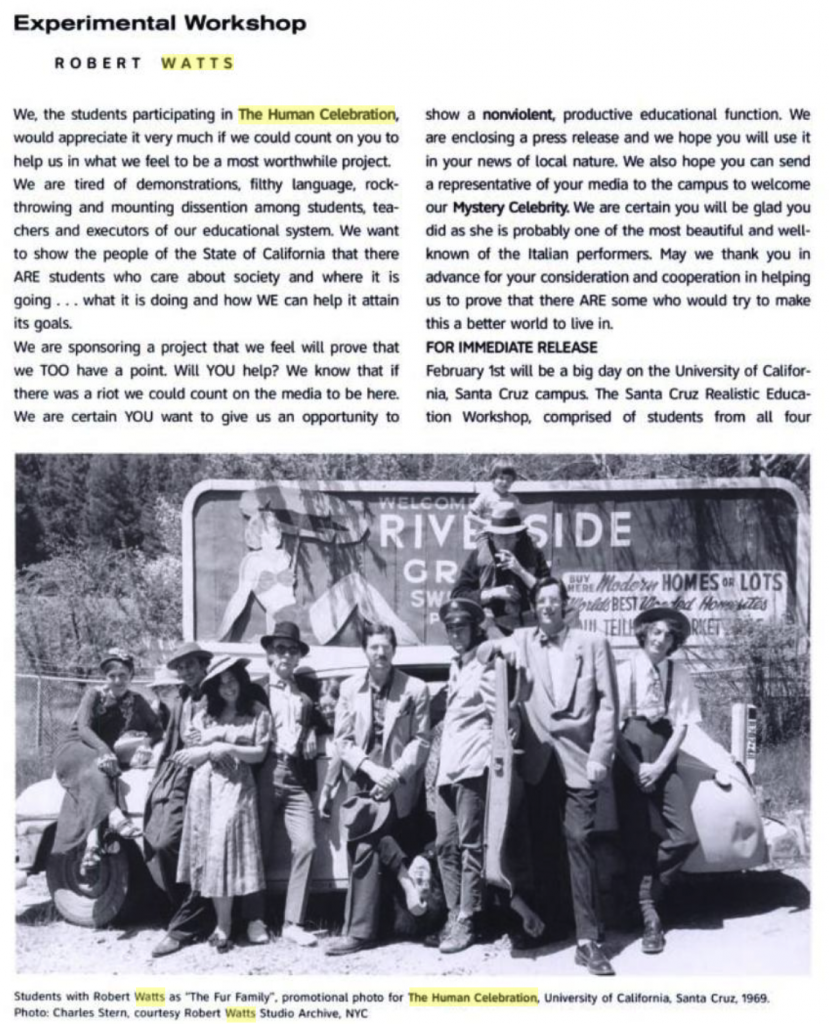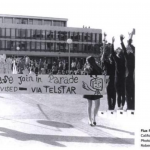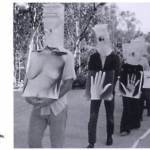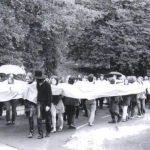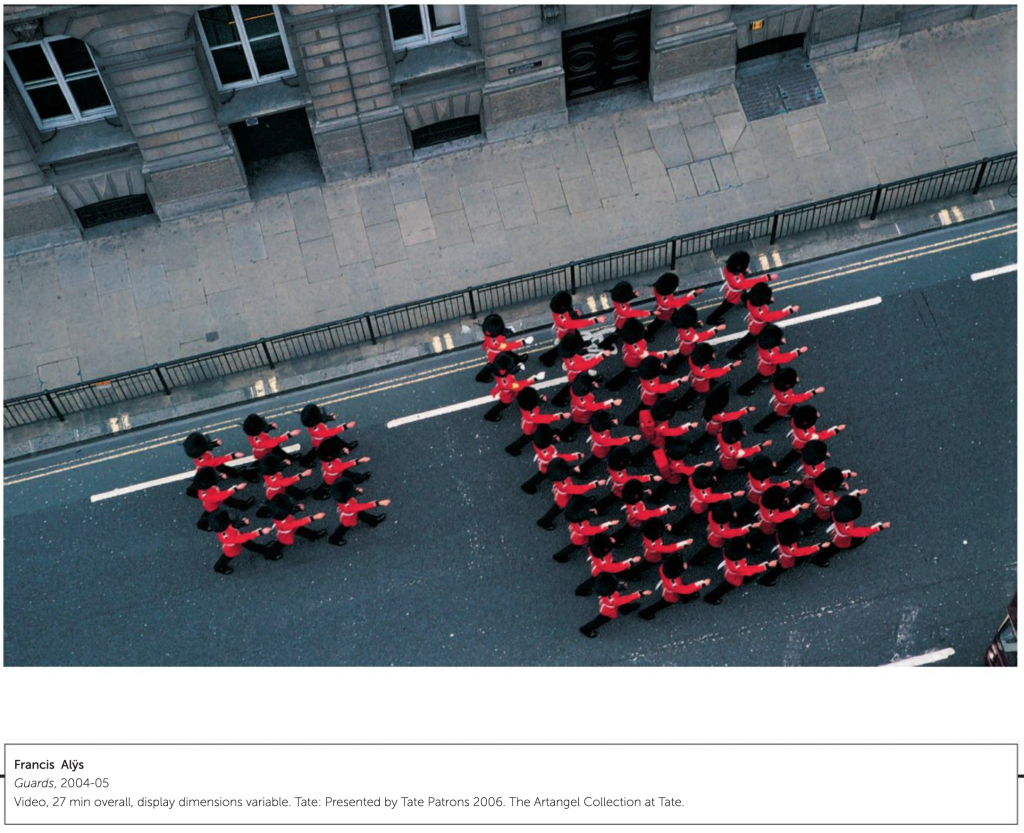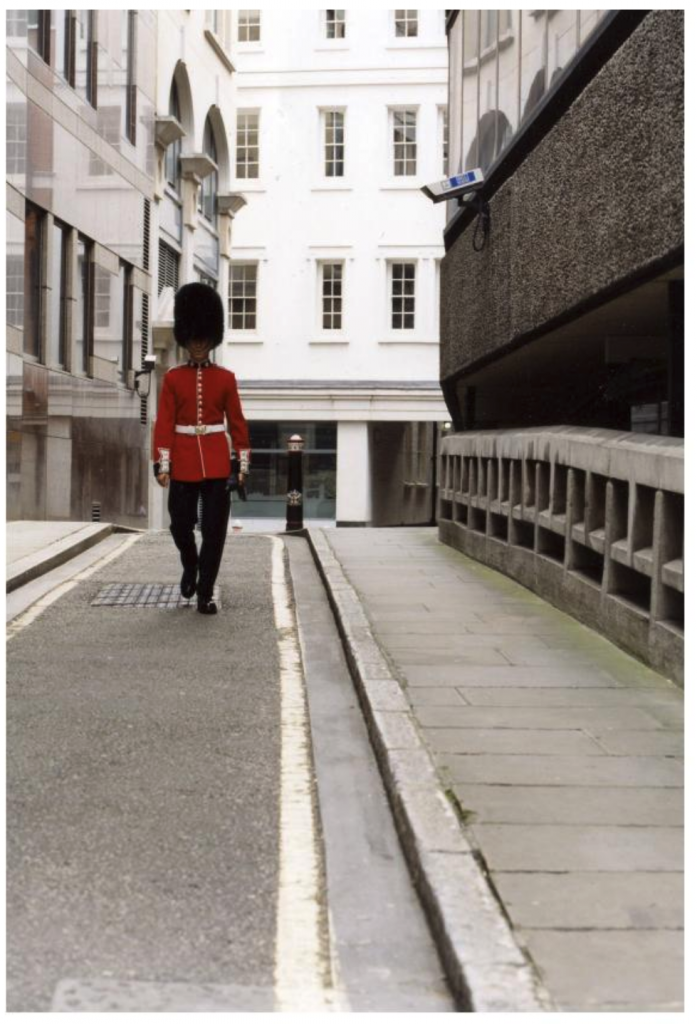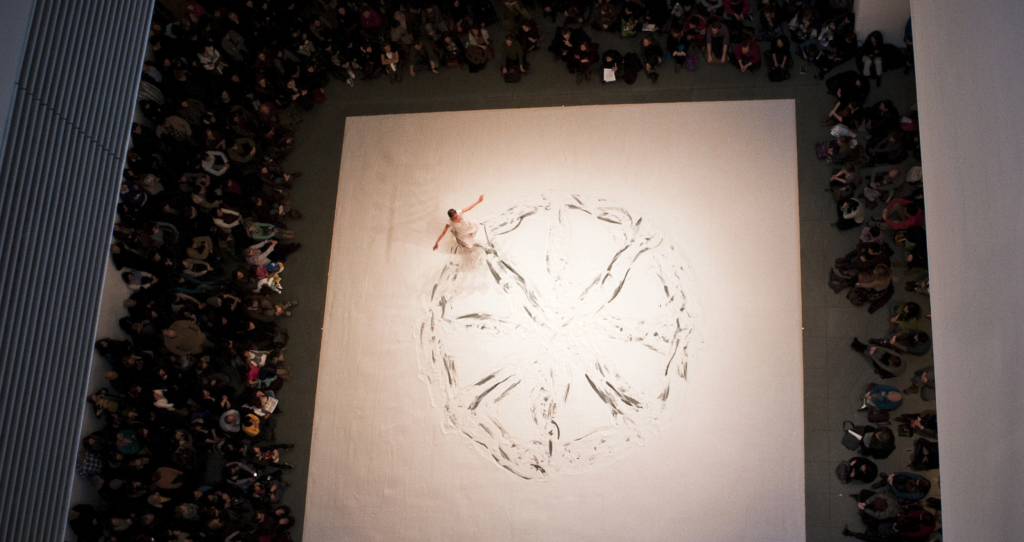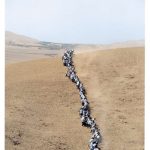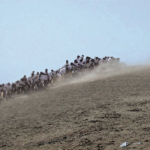- Eric Andersen, “The MassDress” (1985)
- Eric Andersen, “The MassDress” (1985)
- Eric Andersen, “The MassDress” (1985)
- Eric Andersen, “The MassDress” (1985)
- Eric Andersen, “The MassDress” (1985)
- Eric Andersen, “The MassDress” (1985)
- Eric Andersen, “The MassDress” (1985)
[credit]
“Costume by Eric Andersen
Performed by The Group Berzerk
During the art fair Art in 1980 in New York, Gallery Interart from Washington arranged a sensational Fluxus Buffet from October 10 through 18, 1980. The following artists participated: Eric Andersen, George Brecht, Joe Jones, La Monte Young, Yasunao Tone, Nam June Paik, Takako Saito, Mieko Shiomi, Daniel Spoerri, Emmett Williams, AY-O, Geoff Hendricks, Dick Higgins, Alison Knowles, Yoshimasa Wada and Bob Watts. For the occasion Eric Andersen produced a Dinner Dress for 30 people. The costume is part of a series of possible shared costumes for which function overrules convention. Among these costumes are a TV Costume for 1 to 10 people, a Soccer Costume for 11 people, an Industry Costume for 5 to 10,000 people, a Big City Costume for 5 to 10 million people, an Erotic Costume for 3 to 99 people, a Witness/Victim Costume for more than 2 people and a Debate Costume for fewer than 179 people.
In 1984 in Copenhagen, the group Berzerk performed The Idle Walk of the Year for Eric Andersen – a procession stretching from The Ethnographic Collection at The National Museum through The National Bank to the courtyard of Amalienborg Castle. During the Festival of Fantastics, Berzerk performed with the 30 people costume carrying out an extensive choreography. Initially, the performers put on every second part of the costume, conducting a procession across Stændertorvet. Then audience members were invited to enter the remaining fifteen costume parts. The ensuing procession climbed ladders on fire department vehicles and stretched through city streets, alleys, busses and shops. The whole performance lasted more than two hours.
Eric Andersen’s description of The MassDress“
